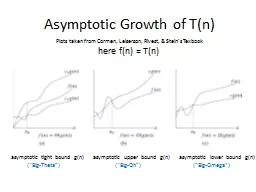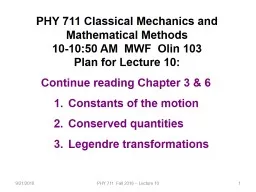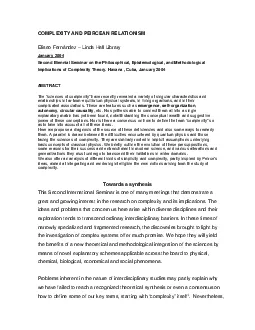PPT-Asymptotic complexity Lecture 10 CS2110 – Fall 2018 “ Simplicity is a great virtue
Author : tatiana-dople | Published Date : 2019-11-02
Asymptotic complexity Lecture 10 CS2110 Fall 2018 Simplicity is a great virtue but it requires hard work to achieve it and education to appreciate it And to make
Presentation Embed Code
Download Presentation
Download Presentation The PPT/PDF document "Asymptotic complexity Lecture 10 CS2110 ..." is the property of its rightful owner. Permission is granted to download and print the materials on this website for personal, non-commercial use only, and to display it on your personal computer provided you do not modify the materials and that you retain all copyright notices contained in the materials. By downloading content from our website, you accept the terms of this agreement.
Asymptotic complexity Lecture 10 CS2110 – Fall 2018 “ Simplicity is a great virtue: Transcript
Download Rules Of Document
"Asymptotic complexity Lecture 10 CS2110 – Fall 2018 “ Simplicity is a great virtue"The content belongs to its owner. You may download and print it for personal use, without modification, and keep all copyright notices. By downloading, you agree to these terms.
Related Documents














